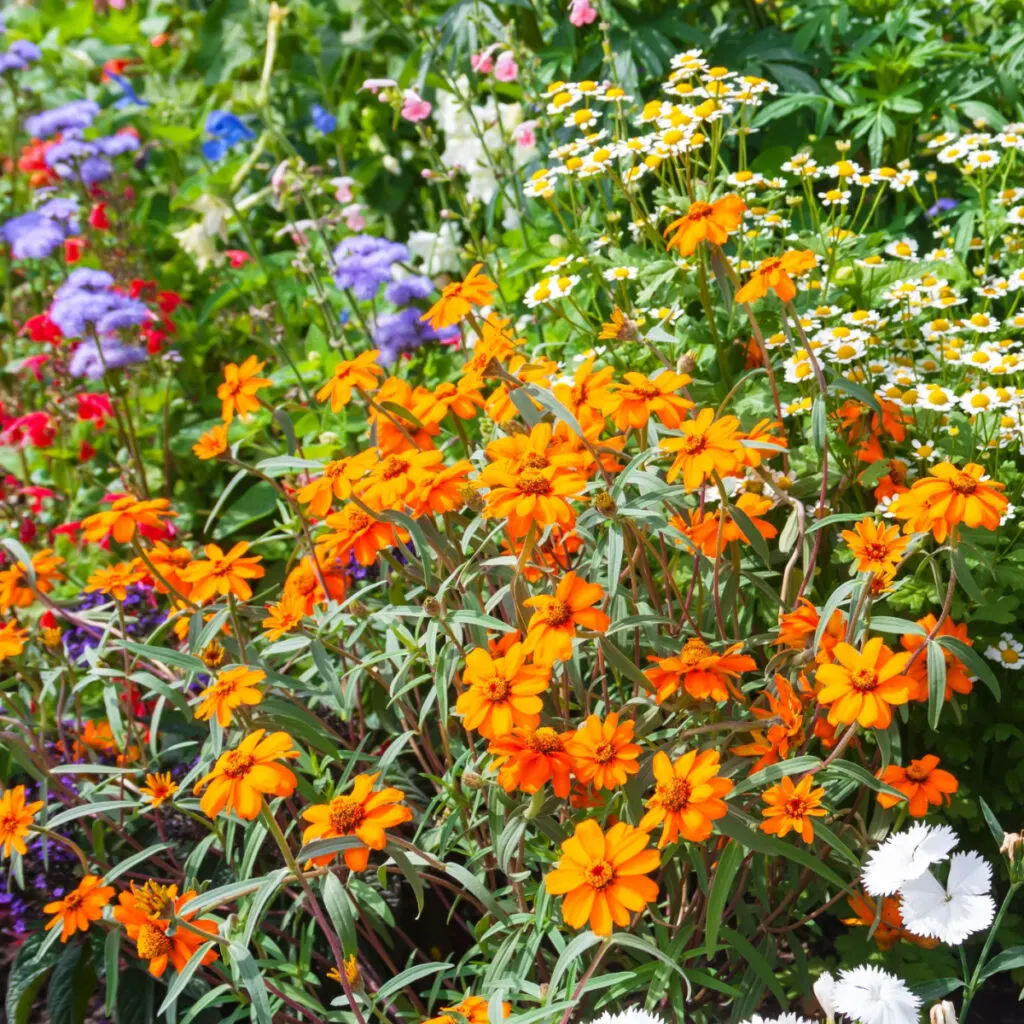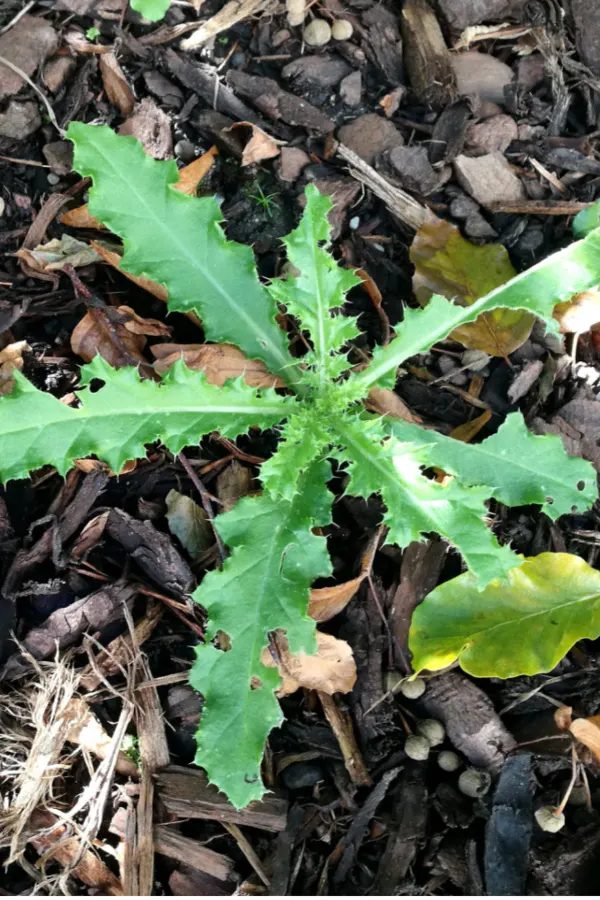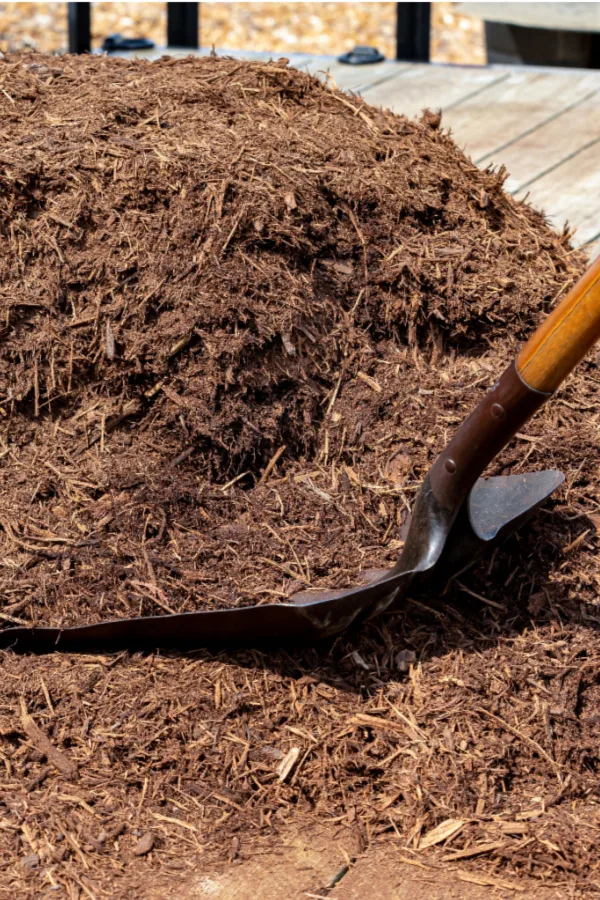Looking for a way to put a stop to the seemingly endless chore of weeding your flowerbeds and finally get rid of the weeds in your flowerbeds – for good?
There is nothing more frustrating to a gardener than dealing with weeds. Especially weeds that continue to grow back again and again stronger than before. It can take hours upon hours to clear a bed of weeds, and it can certainly be disheartening to see them back in just a week or too, thicker than ever!
Once weeds gain a foothold in beds, it can seem impossible to gain the upper hand, let alone try to eliminate them for good. But here’s the good news – it is possible. Even better, it can be easier than you think and require far less hard labor than you ever imagined. Best of all, it can be done naturally, without having to use harsh chemical sprays!

How To Get Rid Of Weeds In Flowerbeds – 2 Simple Secrets To Weed Free Success!
When it comes to eliminating weeds and keeping them out for good, there are two simple secrets that can truly make all the difference in keeping your weeding chores to an absolute minimum.
The first of those secrets is using mulch to always cover your soil. But how you mulch, when you mulch, what you mulch with and what you do with that mulch after you put it down all are critical factors in just how successful it can be in both stopping existing weeds – and preventing more.
The Power Of Mulch – How To Get Rid Of Weeds In Flowerbeds
Mulch is the ultimate weapon for fighting weeds in flowerbeds. When soil is left bare or has only a light coat of mulch, weed seeds can easily find soil to germinate. And as they grow, they create more seed heads that can easily find soil to grow as well.
But the biggest mistake gardeners make with mulch is not using enough. To be effective, mulch needs to be at least four inches thick. However, six inches is really the ideal depth.

With a four to six inch cover of mulch weed seeds can not find a home down in the soil. In addition, existing seeds already in the soil have a hard time germinating. Best of all, a thick layer of mulch also helps retain moisture for your flowers, all while regulating the soil temperature too.
Selecting The Right Mulch – How To Get Rid Of Weeds In Flowerbeds
So what is the best mulch to use for flowerbeds? At the top of the list is shredded hardwood mulch. Hardwood mulch is heavy enough to block weed seeds from getting into the soil. At the same time, as it breaks down over time it adds nutrients and humus to the soil.
But for fighting weeds, it is best to select a hardwood mulch that is not overly shredded or processed. When mulch is finely shredded, it acts more like soil. And because of that, weed seeds can germinate within it.
Avoid double, triple and ultra-fine shredded mulches. Not only will they not last as long and need to be replaced often, they are so fine they will actually help to grow more weeds. See: The 3 Biggest Mulching Mistakes Gardeners Make
Don’t Rake Or Stir Your Mulch – How To Get Rid Of Weeds In Flowerbeds
Finally, once you have that thick coat of mulch in place – leave it alone! When left untouched, mulch will pack down and form a barrier against weed seeds. Weed seeds may blow in and on top, but they can never find a way to the surface to germinate.

Another big mistake gardeners make is to rake or “fluff” their mulch to freshen it up. This single act allows all of those weed seeds on top to sift down below to the surface. Unfortunately, once they do – the weed process starts all over again!
Instead of raking or stirring existing mulch, simple add an inch or two on top as needed. This will keep the weed seeds from sifting down – and more importantly, help keep your weeding chores to a minimum!
Filling Your Beds With Plants – How To Get Rid Of Weeds In Flowerbeds
The second big secret to weed free flowerbeds is to fill your beds with plants – and not just mulch!
When planting flowerbeds, it is better to keep your overall bed space smaller, but filled with more plants. Unfortunately, large beds with large open spaces of mulch become a haven for weeds and weed seeds.
The more plants you can pack into your flowerbeds, the better! The foliage of perennials and annuals are the best type of “living mulch” of all. Not only do they block the hot sun from drying out the soil below, they also form a natural barrier against weed seeds.
And filling your beds with plants doesn’t have to be expensive! Perennials are easy to divide and for many plants this can happen in the spring, fall and even summer. See : How To Divide Perennials

By simply taking small division from existing plants, you can quickly fill your flowerbeds within a few years. Even better, by doing so it will require less and less mulch and labor to put down the mulch with each passing year. Talk about a win-win situation!
Final Thoughts – How To Get Rid Of Weeds In Flowerbeds
By simply mulching thicker and packing your plants in tight, you really can significantly reduce and nearly eliminate the weeds in your flowerbeds. But even with those two critical factors in place, nothing can replace tending to your beds a few minutes every day.
By simply strolling your flowerbeds for five minutes every day or two, you can quickly eliminate any small weed that begins to appear in minutes. Unfortunately, waiting a week or two to check your beds can allow problems to multiply ten-fold.
Just remember – 5 minutes a day checking for tiny or small weeds is simple. But allowing those issues to multiply can mean spending 3 or four hours in a single day in just a week or two! Here is to keeping your beds weed free this year and in the future too!
Listen In To Our Podcast Below For Even More Great Info On Stopping Weeds In Flowerbeds!
Follow Our Facebook Page For Even More Great Tips! Simple Garden Life Facebook Page
Simple Garden Life is a website dedicated to keeping gardening fun, simple and enjoyable! We publish two new articles each week along with a new garden podcast episode every two weeks. This article may contain affiliate links.
